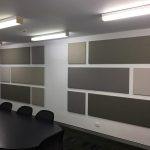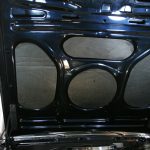Noise is something I find very difficult to tolerate and this post is about different ways to soundproof a floor.
See also:
no posts foundGiven the nature of my job and my lifestyle, it makes it all the more intolerable. For a while I was in a frustrating state, not knowing what to do about the noise coming from below me.
Even merely moving furniture across the room produces such loud noise. I then came across the idea of soundproofing.
At first, it seemed like such a big deal, and I never thought I would be able to do it. But I found most of the information I am going to share here.
Soundproofing is an efficient way of blocking sound from entering or leaving a room. It is quite popular nowadays especially in houses where tenants share walls.
So, depending on where you think you need to soundproof, there are some ways to go about this.
Although some ways are more comfortable than others, it is all dealers’ choice. Now, I decided to soundproof my floors because that treats two kinds of noise for me.
- Impact noise.
- Airborne noise.
Contents
Impact Noise

Impact noise is also known as footfall noise, and as the name implies, this noise is produced from the impact of an object on the floor. Examples are footsteps, dragging of furniture, and other sounds like dropping something heavy.
Impact noise travels freely through the air and the ceiling below. Naturally, impact noise affects the person living below the floor more than it would affect me.
Airborne noise is transmitted through the air. So, it kind of spreads out through the atmosphere. In an apartment such as mine, it seems to travel upwards through the floors.
The airborne noise includes sounds from people talking, dogs barking, cars moving or blowing horns, music and especially someone throwing a party below you. Hence, soundproofing your floors helps to treat these.
When you want to soundproof your floors, you put certain things into consideration, that would help you make decisions on what method to use.
The use of professional help
If you can’t go through the trouble of soundproofing your floors yourself, you can always hire a professional. For one thing, they could help you decide what would best suit your home.
Your budget for this project
Some ways cost more than others especially if you need to hire professional help. So it is always best to go for something you are financially comfortable doing.
Is this a permanent or temporary living solution?
It is preferable to opt for temporary means if you are a tenant. It also costs a whole lot more to do permanent soundproofing.
Naked floor
It is a lot easier to build your soundproofing floor on a naked one. You have more to work with, and everything is much easier to put into place.
How to Soundproof a Floor
For soundproofing a floor, materials with good noise-reducing qualities would be required to achieve the desired sound insulation. The soundproofing quality would also directly depend on the weight of the material used on or under the floor.

Here are seven easiest ways to soundproof a floor:
1. Use Interlocking Floor Mats
Using interlocking floor mats is one of the easiest ways of soundproofing. All you have to do is purchase your chosen design in enough quantity to cover your entire floor.
These floor mats come in different textures, sizes, and designs but typically, they are just like padded tiles. Their edges are designed in such a way that the pieces fit or interlock by the sides.
They can also be easily cut to fit the corners of your room. All you have to do is purchase the floor mats and fix them over your existing floor.
Interlocking floor mats are durable, easy to clean, and even made of antibacterial materials. They are also ideal for use in the garage, gym rooms, and studios.
Although the interlocking floor mats do not give a full-sound deadened effect, they achieve a whole lot. For that deadened effect, interlocking floor mats will be effective only alongside other soundproofing materials such as floor underlayment and carpet.
So, with these fantastic floor mats, you don’t have to worry about pulling that furniture across the room or making any loud sounds. The sounds can’t come up, and they certainly can’t go down.
2. Use Carpet Padding
Carpet pads come in different texture, sizes, and more importantly thickness. A very light carpet padding will solve the problem of bringing comfort to your feet but will probably not absorb much noise.
Carpet pads that absorb sound are thick and made mostly of rubber. In fact with carpet pads, it is the thicker, the better. A thicker pad provides more durability and noise control.
Before you use carpet padding to soundproof your floor, there are specific details to be considered. Those details include the traffic in the room(s) to be soundproofed.
A room with high-traffic will require you to purchase a rubber carpet underlay with closed-cell foam underneath the soundproofing barrier. The reason being that an underlay with open-cell foam will not last under heavy use.
Carpet padding is generally placed under a carpet. Therefore, you can easily measure your already existing carpet to know the size of carpet padding to purchase.
Choose the thickness you are comfortable with but depending on the noted traffic in the room. You can install them yourself or equally get professional help. If you are covering a small space, then smaller sizes will make installation easier for you.
In some cases, like when you have cemented floors, you can place carpet pads over the carpet. Preferably go for rug pads if you have a rug.
3. Get Soundproof Floor Underlayment

Image Courtesy Brighton Soundproofing Ltd
This method is much easier when you have a naked floorboard because it makes it easier to build the subsequent floor with a soundproof material.
But if you already have a covered floor with carpet, tile, linoleum or vinyl, you would need to pull those coverings out to install the acoustic floor underlayment.
To achieve a complete absorption of both impact and airborne noise, the acoustic underlayment should be used with acoustic mats.
When installing, make sure the naked floorboard is smooth and free of any protruding nails or cracks. If it is indeed damaged, it will have to be fixed before any installation can be made. It should also be free of dirt.
The underlayment material and textures differ by production. The manner of installation is according to the manufacturer’s instruction, but there is the general, primary process of installation.
- After ascertaining that the subfloor is in excellent condition, you will need the following materials:
- The acoustic underlayment and mats
- Scissors or a sharp pocket knife
- Tape
- Broom
- Dustpan
Roll out the underlayment material with plastic/adhesive side facing down. The edge with the adhesive is butted up against the wall and the other side facing outward to the room.
The next underlayment would lie slightly on the first, so the adhesive joins the underlayment together. When the underlayment is correctly lapped together and has covered the room, cut off excesses. Place the acoustic mats over the acoustic underlayment and finally install flooring.
Note that this sequence of installation is mostly for laminate floors or hard floors. For carpeted floors place the acoustic mat first with the acoustic underlayment in between. The carpet comes in last on top of the acoustic underlayment.
4. Add Noise Proofing Compound

It can be directly applied to the existing subfloor or between two hard surfaces. That is it can be used between the floorboard and the underlayment.
Green Glue Noiseproofing Compound is non-hazardous, odorless and environmentally responsible. You don’t have to fear to handle it by yourself.
It is easy to apply within a few minutes, easy to clean, and reduces up to 90% of noise. Within 30 days of application, Green Glue reaches its peak performance of dissipating sound.
To use this damping compound, purchase a suitable amount of Green Glue. Read the manual carefully and take simple precautions like wearing gloves before handling the compound.
Using a caulk gun, distribute the compound all over the subfloor, place the underlayment or a hardboard such as cement board or medium-density fibreboard (MDF), on top of the Green Glue. Install your flooring, carpets as required.
As stated earlier, the sound damping compound takes at most, thirty days to perform maximally. You can also call for professional help in using this soundproofing method.
5. Insert Deck Screws
If you have been bothered by those squeaky floor sounds all you need are some deck screws. You will need a pencil, drill, drill bit with a countersink, deck screws, and a bit driver.
Of course, you can always get a handyman to do this for you but it’s quite a basic and straightforward process.
First, you need to remove your current flooring, carpet, linoleum, tile, or hardwood flooring. This procedure is to get access to the subfloor. You could do this for areas particular to the squeaking sounds or remove the entire flooring altogether.
Locate and mark the squeaky areas. Drill pilot holes on each mark, use a bit with a countersink of the appropriate size of the screws you are using to do this. The bit should be slightly smaller than the width of the screws.
Place a floorboard in position and insert the sharp tip of the deck screw into the earlier drilled pilot hole. Drive the screw gently through the board and into the framing with the bit driver, keep applying pressure as you go.
Repeat this process to place screws in all of the earlier drilled pilot holes to secure all the floorboards. It is preferable to drill the joists.
At the end of this process, the squeaky sounds are no more, and your floor is stronger and more secure.
6. Install Additional Flooring
Flooring is the final stage of your soundproofing process. It also has a part to play in reducing noise. You can choose to install tiles, hardwood, or laminate wood, linoleum, or carpet.
Any of these choices will minimize floor noise. However, to be more professional before you install the final flooring, take precaution to use adhesive instead of nails to attach your flooring to the underlayment. It plays a role in reducing sound with even the smallest effort.
If you would also prefer throw rugs or area rugs, they are a nice, attractive way to reduce noise.
7. Use Rubber Floor Mats
If your noise is caused by machines or appliances vibrating on the floor, you can easily solve this with a rubber floor mat.
Appliances could be the television, dishwashers, stereo systems, dryers, and washers. When these mats are placed directly below the appliances, they muffle the vibrations and significantly reduce the noise and its impact.
So you no longer have to scowl at that machine, ever again. It is simple and effective.
Tips And Precautions
- Make sure to consult a flooring or hardware store before making any changes to the floor. Go to the store with a physical or pictorial description of the floor or sub-floor, so they can help you get the appropriate tools, product and best-suited method to accomplish the task.
- Take necessary precautions to wear gloves, goggles when handling screws, saws, hardwood, and dampening compounds.
- To get the ultimate benefit of soundproofing your floors, you can volunteer to purchase the soundproofing material for your downstairs neighbor. That is if you come to an agreement that they will install it.
- More importantly, do not make changes to the floor of a building you do not own. Take the necessary permissions from the owner of the building before implementing any changes to the structure of the floor. Consequently, some owners might grant permits for such work only if it is carried out by professionals.
Final Thoughts
Typically, noise is everywhere. If not in your apartment or building, it is in the outside world. And inevitably, it is transmitted into our homes.
Soundproofing is the one solution to being able to shut out all of that unwanted noise. Soundproofing doesn’t have to be complicated or expensive.
You can make it a fun process by getting help from a friend. It is also wise to be well prepared. Take your time to get all the tools and materials you need.
Still, you do not need to outdo yourself. Simply get professional help if it suits you better or if the owner of the building says so. If you begin this project and encounter problems, reach out for help.
Soundproofing also goes beyond floors, to walls, doors, and windows. It is quite popular in recent buildings. Even in family homes, people now choose to soundproof their houses and have a more peaceful living environment.
It brings joy knowing that, you no longer have to create arguments with your neighbors over the noise. Any of these methods will help you maintain a good neighborly relationship.
And if you are like me, you get some peace to work and relax in your home.






